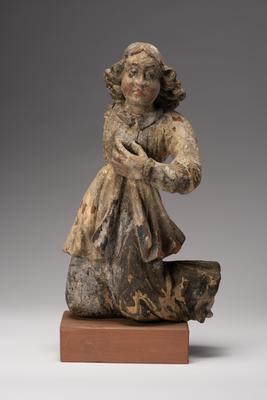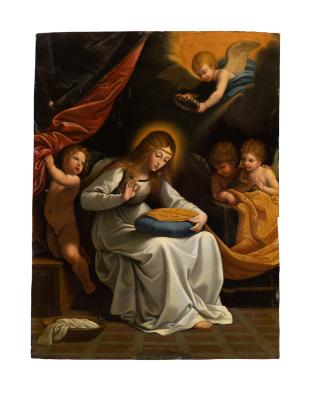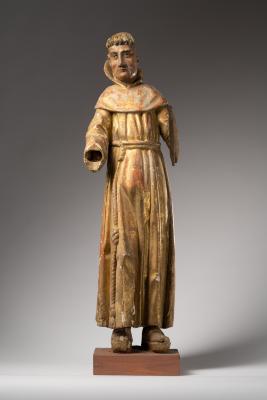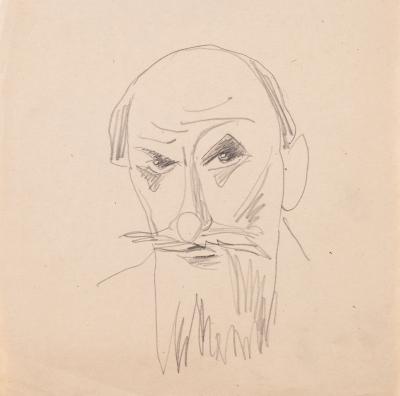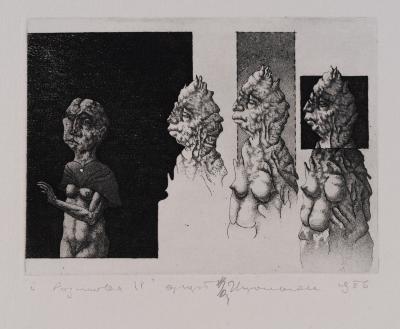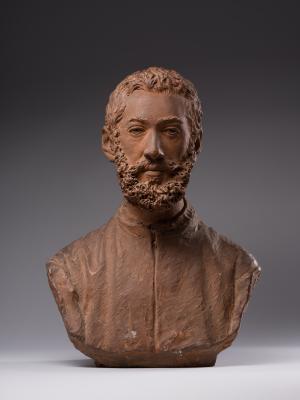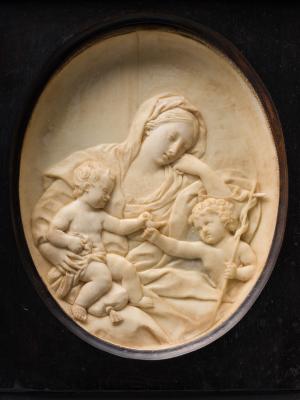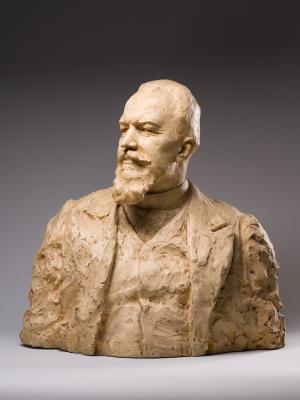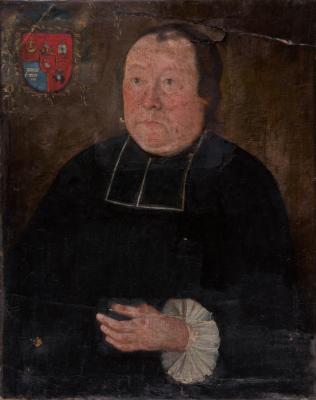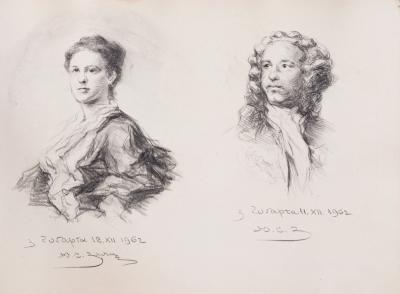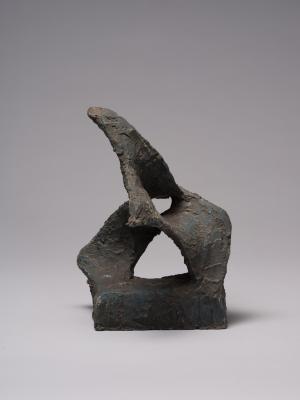The composition is known in two variants. The first one was performed for the album Raccolta di Cinquanta Costumi Pittoreschi (Collection of Fifty Picturesque Costumes) published in 1809 in Rome, which depicted three young people – one of them was a horseman on horseback, the other two were standing next to a gypsy woman telling fortunes to one of them. The action was taking place in an architectural background. This composition was later reissued in colour in Leipzig in 1840 under the title La zingara che indovina in Roma. The second version from the album Nuova Raccolta di Cinquanta Costumi Pittoreschi incisi di acqua forte (New Collection of Fifty Picturesque Costumes), published in Rome in 1815, which was replicated in 1817, is simpler. There is no architectural background; only two young men and a horse are before the fortune teller. The Lviv composition dated 1816 is a simplified version of the second variant. The drawing is not as detailed as in the engraving from the album dated 1815. The author pays more attention to the colour scheme and contrasts of blue, red, and yellow. The artist focuses on the process of fortune-telling itself. A gypsy woman is trying to prove something to a young man by reading his hand. The second young man is looking at his colleague's hand and not at the fortune teller, as shown in the engraving dated 1815. The second gypsy woman is the same age as the fortune teller, not an older woman, as shown in the etching from the album. In the so-called Lviv version, B. Pinelli demonstrates a qualitatively new composition – light, dynamic, and not overloaded with details.







